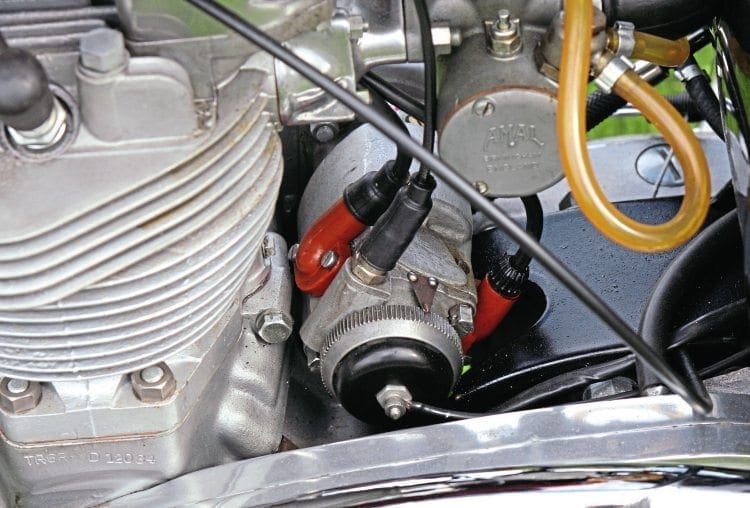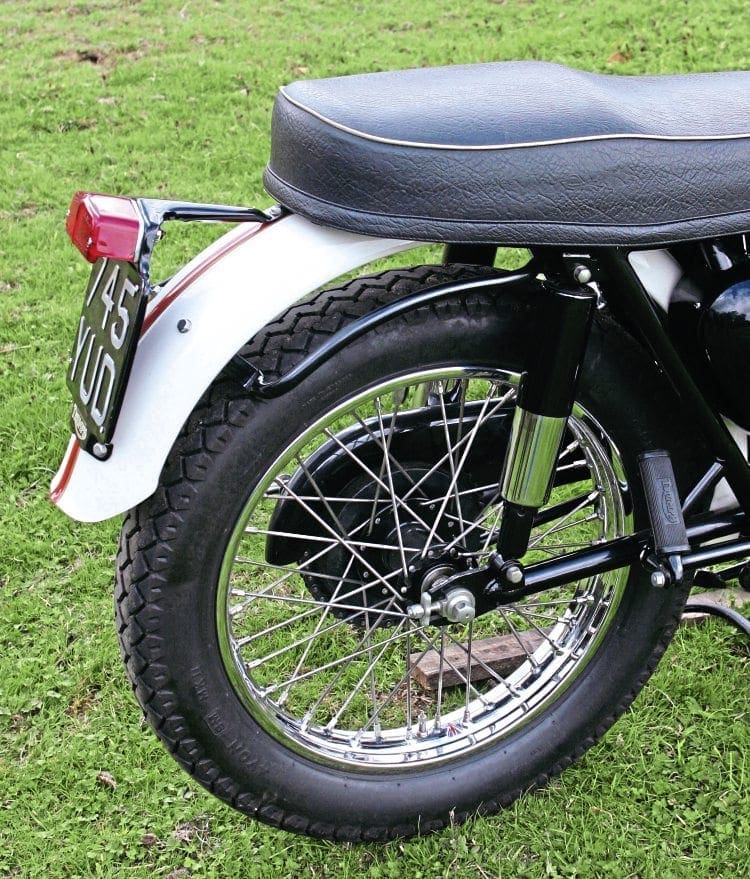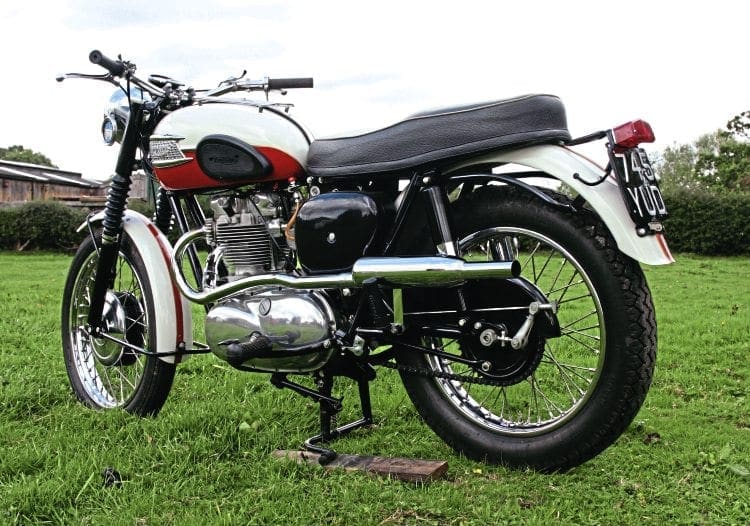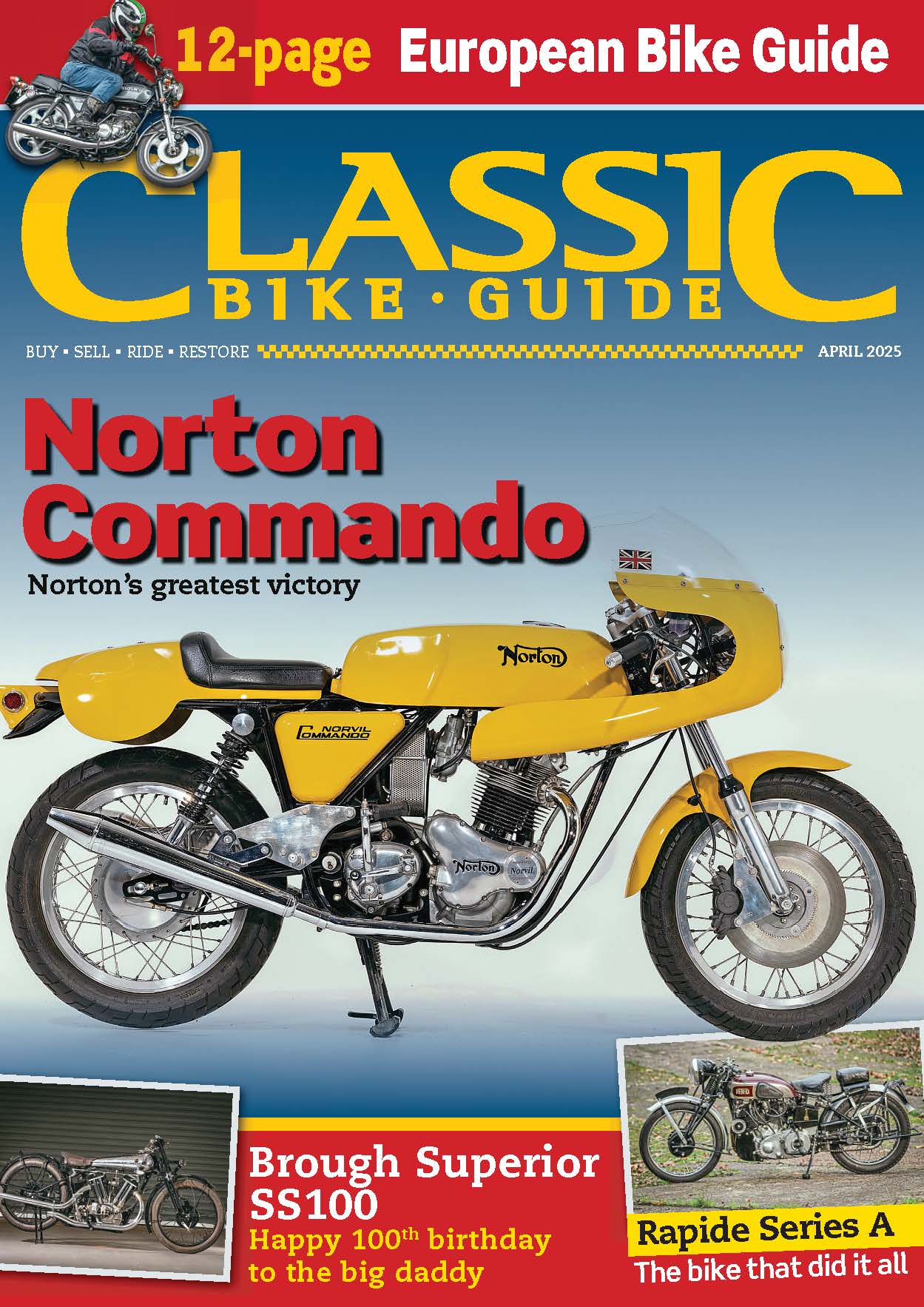
Words: Frank Melling Photos: Carol Melling
The TR6 was born for the USA and enjoyed its moment of glory in an American movie.
It was the Americans who pressed Triumph for a bigger capacity machine than the 500 twins and the Meriden factory was happy to supply the 650 Thunderbird in 1949.
The Thunderbird was a Harley-beater in terms of performance, but its all-iron engine was really designed for the street. In competition, everything from scrambles to the Clubman’s TT in the Isle of Man, Triumph riders relied on the all-alloy 500s which were light and fast.
However, the 500s were underpowered for the West Coast, particularly for desert racing. So in 1956 the pre-unit Trophy arrived, equipped with the alloy cylinder head from the Tiger 110, a high-comp piston, small petrol tank, chunky rear tyre and QD headlamp.
Effectively, early TR6s were a bigger version of the 500cc TR5, itself extremely successful in motocross, enduros and the hugely important Big Bear race and the Catalina GP.
TR6s were similarly fast, with a 100mph turn of speed, and were ultra-cool on the road. In its six years of production, various versions of TR6 were built, including the East Coast incarnation with ventilated brakes, a 19-inch front wheel and 18-inch rear, and the roadster-styled version for the home market with low-level exhaust and flatter bars.
Triumph claimed 42bhp for the TR6 and certainly, all over Southern California, Triumph tuners rolled out machines with well over 40bhp at the back wheel.
Not only was the power impressive for the day, but it was delivered in a supremely useable manner. Peak power was at 6500rpm but, other than desperate passes, there was never any need to rev the motor this hard.
Right from tickover, a TR6 oozes creamy smooth torque which makes life so easy for the rider. It does take a bit of skill and knowledge to set the manually adjusted ignition and choke for starting but, with experience, the TR6 will burst into life first kick, every time.


The TR6 came with quickly detachable lights because, initially at least, it was a competition bike and the lights were surplus for racing.
The lights are powered from a typically mediocre dynamo, but the engine sparks come from a Lucas K2FC competition magneto. I actually like the magneto ignition. When freshly renovated and crisp, a magneto will never let you down.
Although not rated at the top of the pantheon of British bike gearboxes, the Triumph four-speeder and its accompanying clutch are both very sweet.
They’re robust too, and few complaints were ever heard from the desert racers who really abused their TR6s.

However, the TR6 did suffer somewhat from Triumph’s usual flaws with its chassis and handling. From 1960, a stronger, duplex-downtube frame was introduced, paired with new tele forks.
The frame was then strengthened again in 1961, and the steering geometry tightened. The brakes were also beefed up with new backing plates and full-floating shoes.
This makes the final versions of the original TR6 the most desirable – the pre-unit machine with its separate engine and gearbox was replaced by the unit construction version at the end of 1962.
The designers of the day didn’t have access to CAD/CAM programmes, but they did know that to make bikes handle you needed a 55-inch wheelbase, a steering head angle of 63 degrees and 5¼ inches of trail. In this configuration, the TR6 has a wonderfully neutral feel.
There is no need for counter-steering or shifting body weight. It’s simply a case of asking the TR6 to do anything, from power slides to landing true after a jump, and it will obey.

Yet despite being a competition-orientated machine, the TR6 is truly easy to ride. It has a low seat height and is light and narrow.
The torquey engine is very hard to stall so a novice can learn clutch control with ease. The TR6 stops reasonably well, too. If you like to press on, a set of modern race brake linings give the eight-inch front brake some bite. If not, the brakes are fine for classic ambling.
This brings us to the TR6’s most famous moment, the Steve McQueen/Bud Ekins jump in The Great Escape.
Steve agreed to do the film for the director/producer John Sturges, but only with the caveat that there would be some motorcycle action in the movie. Bud – who won the 1957 Big Bear Run on a TR6 – told me the story when I spoke with him in his North Hollywood shop.
“I’d sort of taught Steve to ride bikes and when he was offered a part in The Great Escape he persuaded John Sturges to write a bike chase into the script and into his contract.

Steve also insisted that he would only work with me. John Sturges really wanted to keep Steve happy so he took me on for a $100 a day, including expenses – which was good money when a new 650 Triumph was $600. As for the bikes, it had to be TR6s. We knew the bikes inside out and we knew that they wouldn’t let us down.”
It was a solid choice for filming, even if the Triumph was built in the wrong country and in the wrong decade to be an entirely convincing Second World War Wehrmacht machine.
With a skilled rider in the saddle, the TR6 was surprisingly competent and made life easy for Bud as the stunt rider.
The riding sequence required repeated bursts of frantic activity but the clutch proved to be bullet (even German bullet!) proof. Both McQueen and Ekins knew that whatever they demanded of the TR6 in the film – and McQueen got arrested several times for reckless riding when the crew was not filming – the motorcycle would deliver.

However, the chassis wasn’t as good as the engine, and the limited (by modern standards) amount of suspension travel demanded careful consideration when it came to the famous jump.
Triumph’s front fork offered a nominal six inches of travel, of which only the middle couple of inches really worked. Landing front wheel first, supercross style, meant a guaranteed trip to the hospital!
Things were no better at the rear end, which was equipped only with the oil-damped Girling dampers that were intended for road-riding on tarmac, not leaping barbed-wire barriers.
So Bud and Tim Gibbes designed a dug-out ramp to ensure that the bike took off in a gentle arc, landing on the back wheel after the 65ft-long, 12ft-high jump.
Done this way, the Girlings would bottom out, the frame flex and the front wheel would come down to earth controllably. That’s the theory, and it was possible, as Ekins showed – but only if you also possessed a man-sized set of cojones…

Back in the modern world of the classic rider, the single-carb TR6 is arguably an all-round better bike than a twin-carb Bonneville. It’s almost as fast over the quarter mile, comes within a whisker of the T120’s top speed, and handles just as well.
A TR6 is more tractable at lower revs and easier to keep in tune. The T120 still tends to steal the limelight, but this makes the single-carb 650 at least a third cheaper than its twin-carb counterpart. Note the word ‘cheaper’ – rather than cheap.
Even so, it’s one of a tiny group of classics on which I would spend my own money.
Price Guide
From £6,500 to £9,000
Also consider
Unit-construction TR6 (less expensive, less charismatic, better brakes). T120 Bonnie (more expensive, no faster, more finickity). BSA A10 Spitfire Scrambler (similar style but far less common so prices often sky-high)
Specialist info
Ace Classics: aceclassics.co.uk
Tri-Supply: trisupply.co.uk
Monty’s Classic Motorcycles: montysclassicmotorcycles.com
Reg Allen: reg-allen-london.co.uk
Owners’ club
Triumph Owners’ Club: tomcc.org
- MANUFACTURED: 1955 to 1962
- ENGINE: Air-cooled ohv parallel twin
- BORE / STROKE: 71mm x 82mm
- CAPACITY: 649cc
- COMPRESSION: 8.5:1
- POWER: 42bhp @ 6500rpm
- CARBURETTOR: Amal
- FRONT TYRE: 3.00 x 20
- REAR TYRE: 4.00 x 18
- FRONT BRAKE: 8-inch sls drum
- REAR BRAKE: 7-inch sls drum
- ELECTRICS: 6V magneto / dynamo
- FRONT SUSPENSION: Tele forks
- REAR SUSPENSION: Swinging arm, twin shocks
- WHEELBASE: 55.5 inches
- SEAT HEIGHT: 30.5 inches
- WEIGHT: 385lb dry (with duplex frame)




